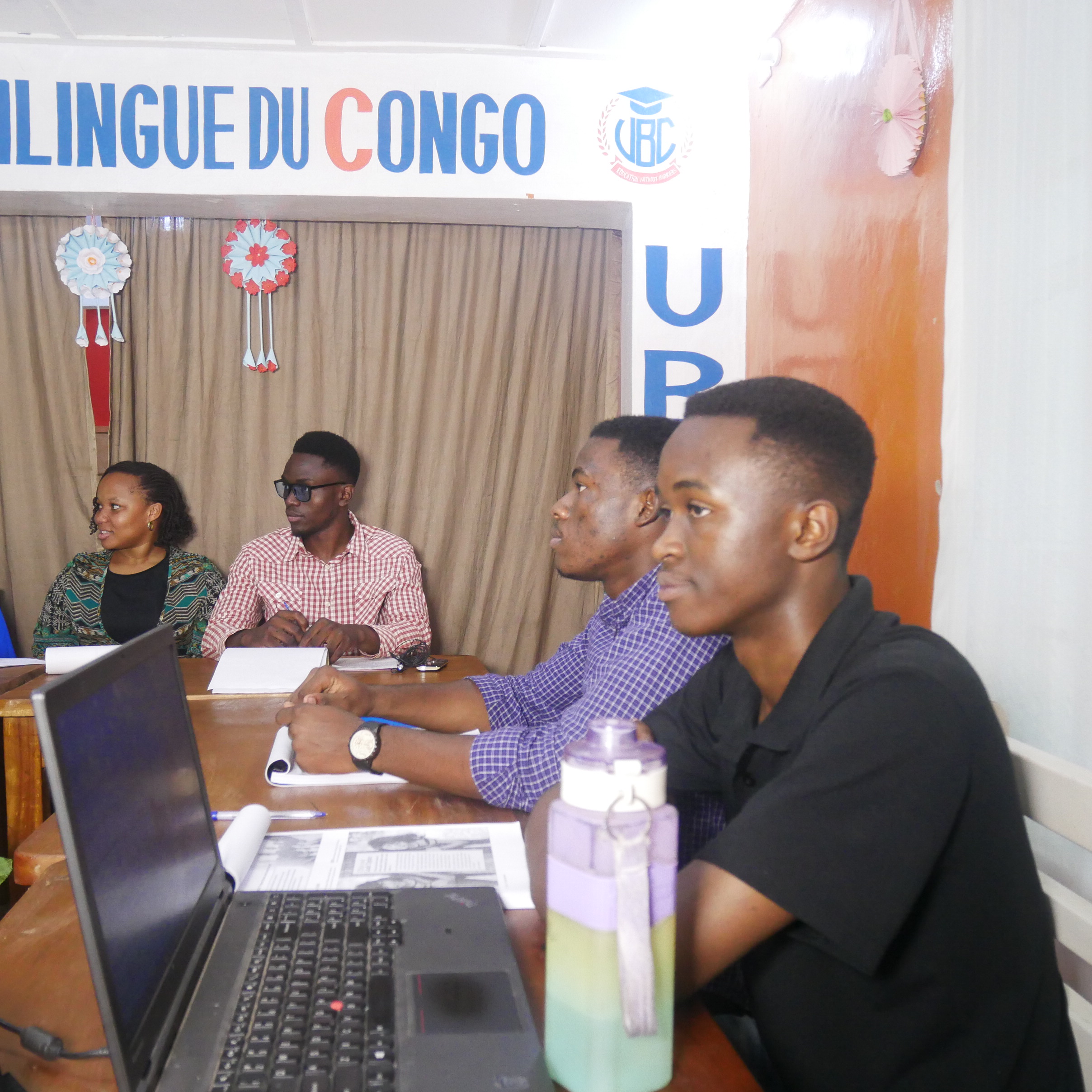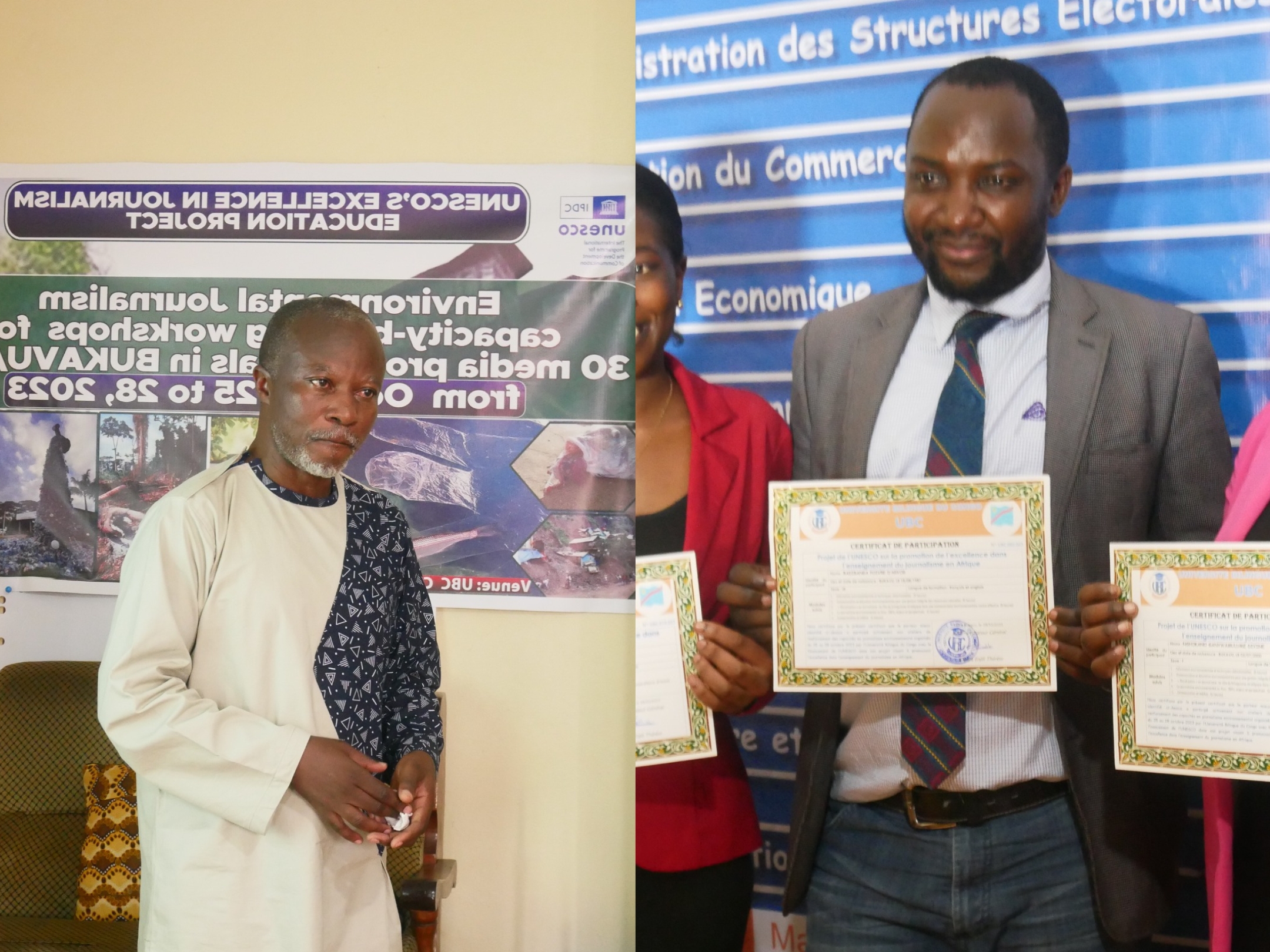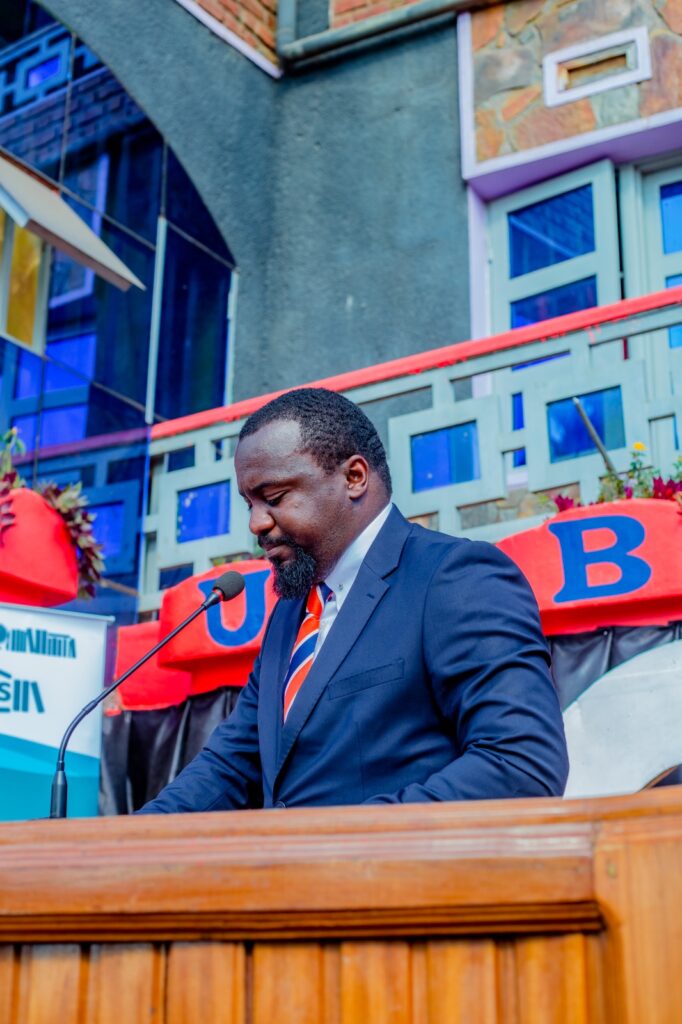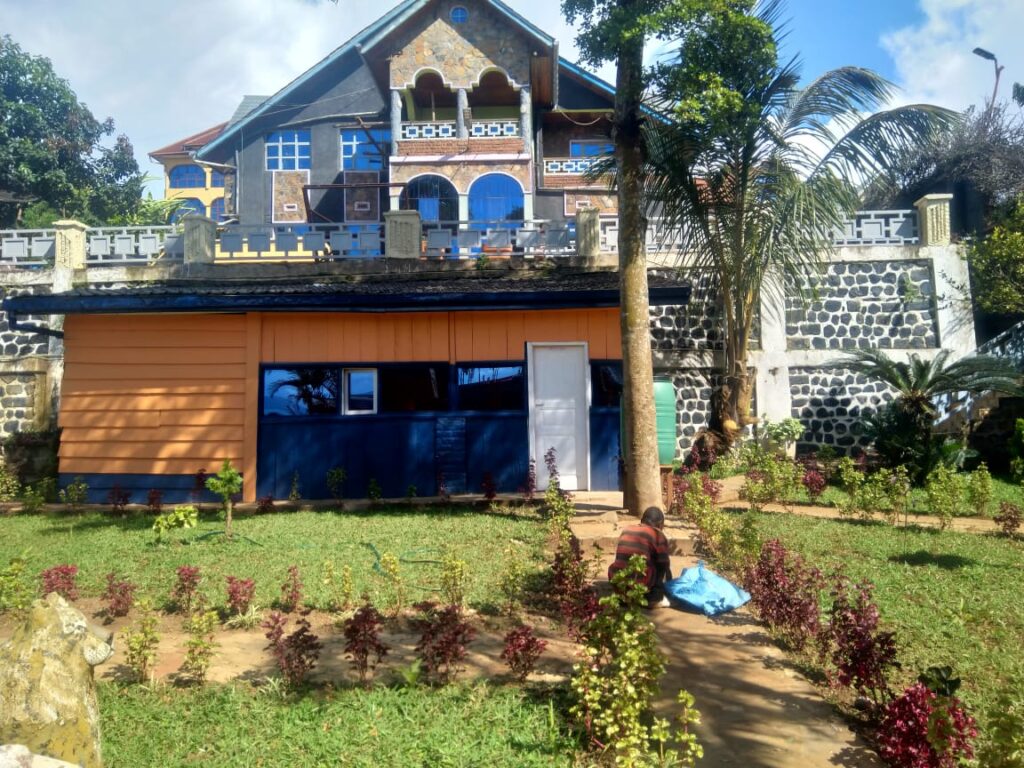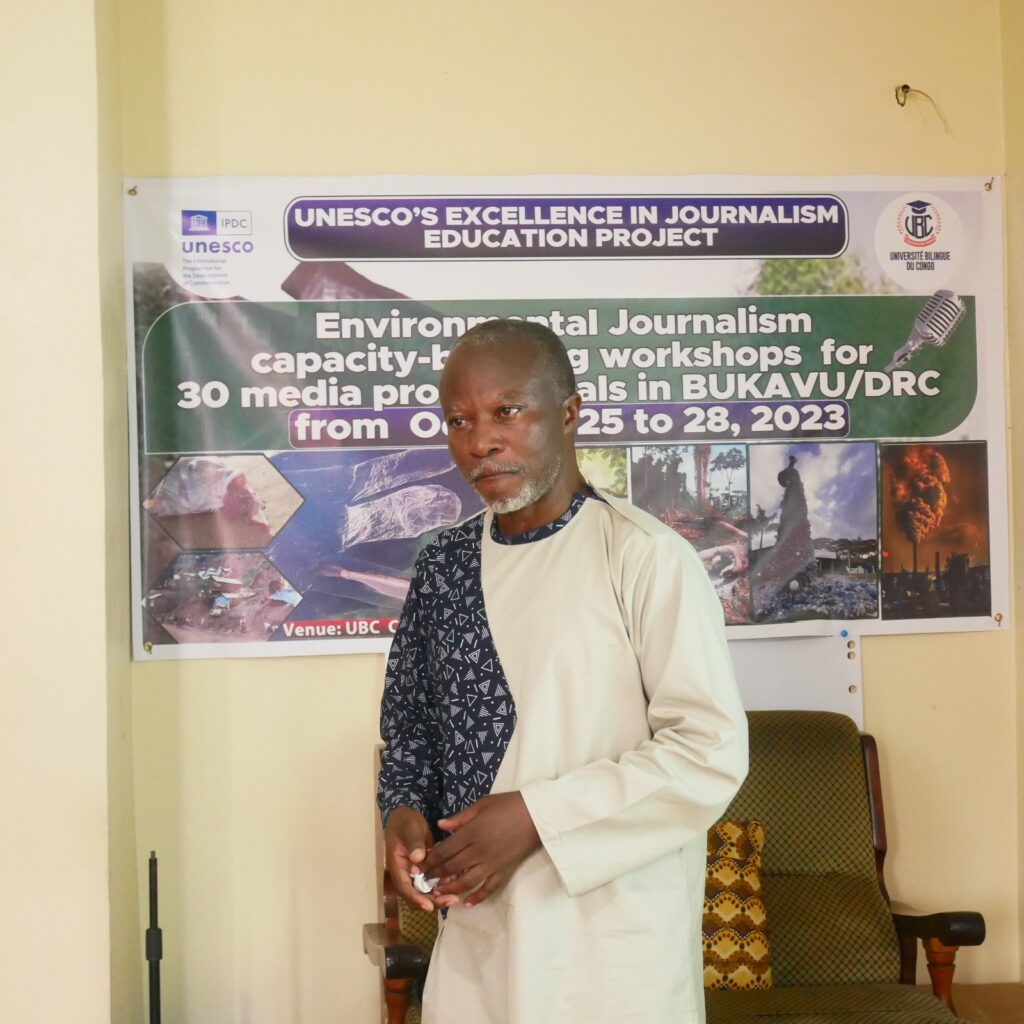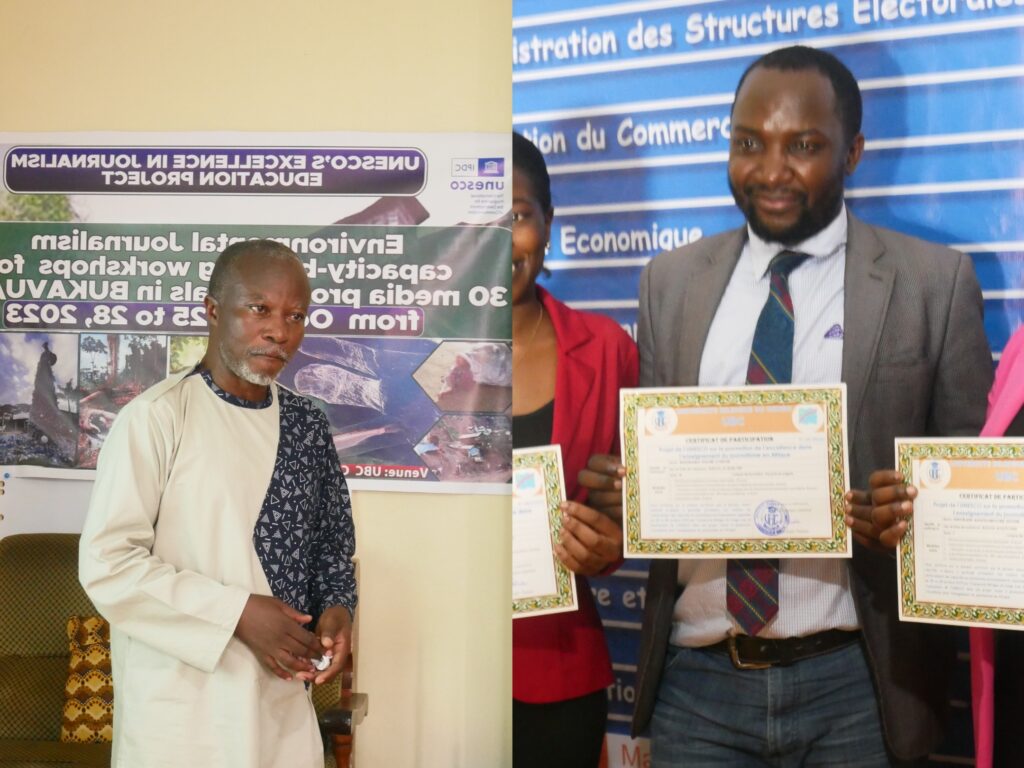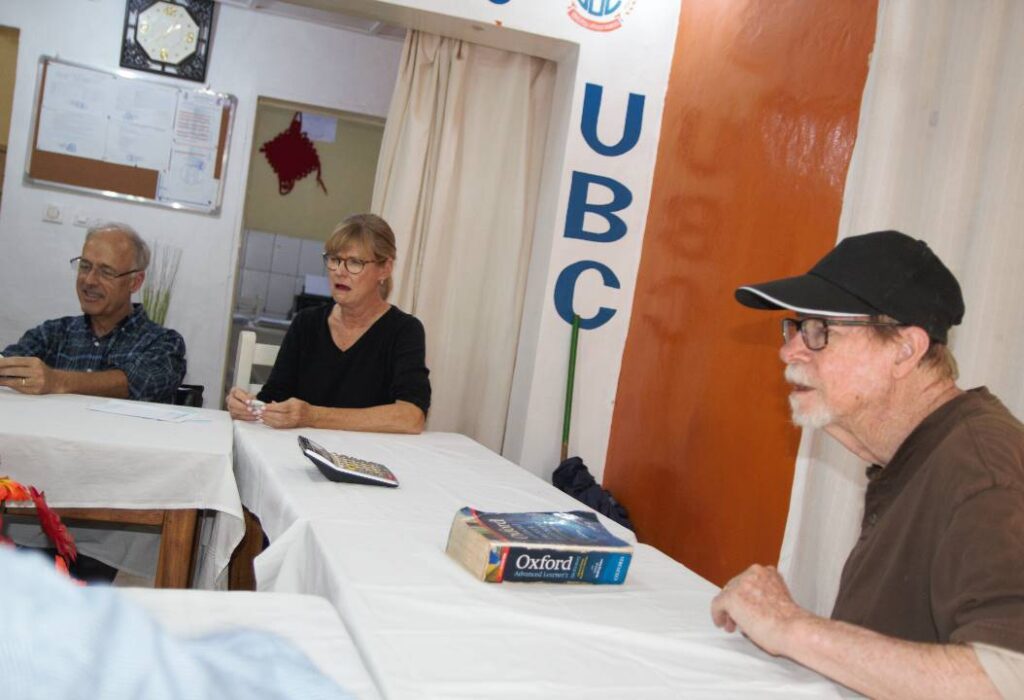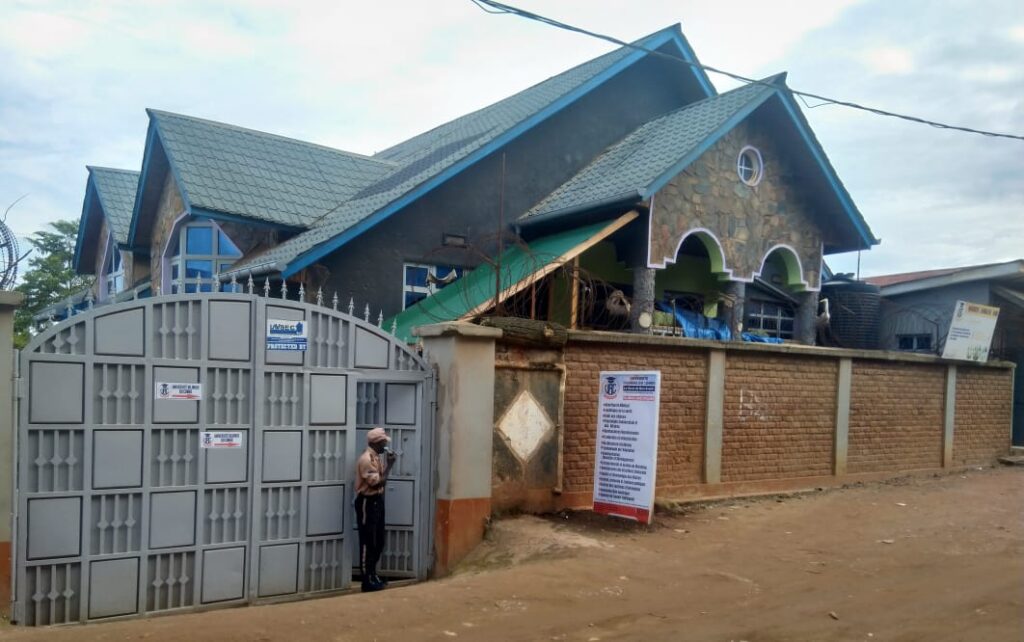The UNIVERSITÉ BILINGUE DU CONGO in partnership with UNESCO’S promoting excellence in journalism education in Africa project has, in an Eco-Journalism four-day intensive capacity-building workshops of 30 media professionals in BUKAVU/DRC, tried to dismantle this very technical and scholastic field, that has, for decades, remained unlocked to media professionals in its three encompassing areas (journalism, communication and ecology/environment) in the Greatlakes of Africa, addressing the environmental journalism rhetoric.
This project supported by Google News Initiative and steered by the Wits Centre for Journalism and the School of Journalism and Media Studies at Rhodes University, both in South Africa, has, through journalists four-day capacity enhancement, natured their knowledge on environmental journalism. 3o media professionals (journalism educators, journalism students, and practitioners) in Democratic Republic of the CONGO, particularly in SOUTH KIVU/ BUKAVU, are now aware of the key environmental challenges in the great lakes region of Africa. They are now equipped with the necessary knowledge to tackle and generate debates on issues related to the world of environment, providing synergies to topics formerly ignored in the general media, such as reporting environment and climate change, natural disasters, growing epidemics, poaching, illegal logging, deforestation, identifying fake news, understanding the basic components of a feature story, and pitching stories to international media. Journalists and journalism educators and journalism students from different radio stations, web media, colleges and universities have participated to/in the workshops. Along the four-day capacity-building workshops on environmental journalism, experts from different backgrounds, journalists, journalism students and journalism educators, have emphasized the need to promote environmental journalism and highlighted the role of media in bringing environmental issues to the forefront in order to restore the equilibrium between man and environment as ecosystem.
- The environmental emergency
One of the trainers, professor Jean-Claude KAKULE LYAMAHESSANA, a very prominent and iconic figure in environmental communication in the context of the African world heritage sites, particularly in the Congolese parks, has urged the participants to report the dangers or risks from human-caused climate change threatening the many African sites, forests (fauna and flora) of sacred value. These risks include coastal flooding and erosion exacerbated by rising sea levels crumbling down many important archaeological sites containing vital clues on the evolution of humans (inondations cotieres et d’erosions exacerbeés par l’élévation du niveau de la mer mettant en ruine des sites archéologiques contenant des indices vitaux sur l’évolution de l’homme), increasing temperatures , shifting precipitation patterns, ocean acidification , increasing intensity and frequency of extreme weather events…. All these contemporary ecological sensibilities are nothing else than eschatological evidences if journalists do not take quick action to tackle environmental narratives that develop human conscience awareness about the necessity for environmental protection, a worth of heuristics of fear. Environment is our common home, insinuated Professor Jean-Claude KAKULE who, not only is a senior environmental communication specialist, but also an environmental Philosophy advocate.
- Glocalization in environmental communication
As for EUPHREM NGOY BIRINGANINE, one of the trainers and anchor in stylistics, cross-cultural communication, discourse analysis, translation studies, and in eco-linguistics, it’s time for participating journalists to take responsibility for prioritizing and reporting on environmental challenges. According to him, more journalists, approximately 80-90% centre news report around politics and ignore environmental issues though this should serve as a cornerstone by giving it fair attention in reporting. Social media is also an important tool, which at times plays a more powerful role in sensitizing the public and authorities than mainstream media, he said. In his presentation” Glocalization in journalism”: the role of strategic bilingualism for an effective environmental communication, it’s more than needed that journalists communicate in a language that their audience understands well. More scholastic language, built on very scholastic technical terms that puzzle the audience doesn’t favor help journalists communicate with their audience.
Therefore, journalists must know that it’s possible to reach effective accountable journalism by communicating in local languages, especially in languages of local people as public behavior change has to be reached. EUPHREM NGOY BIRINGANINE uses a neologism “glocalization” that he deconstructs into “globalization “and “localization” to mean a two-way relationship process through which journalists must go from global-to-local theoretical matrix that takes into consideration the complexity of journalism ethics in specific cultural and national contexts.
By Environmental bilingual Journalism, EUPHREM NGOY BIRINGANINE urges journalists to bring environmental news (marine pollution, the impacts of urban development, climate change, effects of increased hurricanes, biodiversity, technology and innovation, increasing human-wildlife conflict, and how reforestation could help prevent zoonotic diseases…) from global and regional stories to local audiences by translating global stories into the languages of the audience. Lecturer EUPHREM NGOY BIRINGANINE, after suggesting a theory that communication is not what the speaker says, but rather what the audience hear, points out that journalists have universal knowledge that they must translate into local language for local behavior change. He tackles four major techniques or communication codes that journalists may resort to in order to communicate with their audiences about universal environmental facts in their own languages. The four strategies imply the translation of one language into another (translating the universal knowledge that the journalist knows into another local language), the intralingual translation to mean that journalists may communicate news in their source language by using not a very scholastic language but rather by resorting to a very low style. Additionally, journalists can juxtapose meaning, that’s using, for example, different pictures to explain the same message. The last method that EUPHREM NGOY suggests journalist is the intersemiotic translation that involves two different semiotic signs, for example translating from words to images, to numerical code, or to nonverbal sounds.
- Media and the promotion of the environmental awareness
John KAJUNGA, a freelance journalist, PhD student in communication studies, emphasized how media either as a risk communicator or as a promoter of data, information, and good practices of any kind, should smooth the progress of people to become more environmentally responsible and cultivate environmental awareness. Therefore, journalists must play a pivotal role for the establishment of environmental journalism to provide a better public meeting for environmental argument, knowing that media should not only play a “watchdog” role as it will educate the public about environmental issues, raise awareness about environmental problems and challenges associated with achieving sustainability but also influence human perception, attitudes, and behavior towards environmental resources, John KAJUNGA insisted.
On Day 4 of the workshops, METHUSELA, one of the trainers divided the participants into four teams and tasked each focus group to work on an environmental section (either protection of biodiversity, global warming, natural catastrophes, or air pollution) that should be reported in news media. Each team had to point out the news report objectives of the section worked on, the reporting method, the message to convey, the channel and frequency… to acquaint themselves with the environmental challenges of the region.
- Taking action
“When we, journalists, point out harm caused by pollution, talk about global warming, blame the political authorities, report illegal mining, when environment becomes a sensitive issue, we are arbitrary arrested and prosecuted”, said one of the participating journalists.
The trainers briefed the journalists, journalism educators and journalism students on how to report various environmental issues and present their findings without harming any of the political authorities.
“Journalists considered that for a long time, journalists did not pay much attention to the environmental covering because they lacked technological knowledge, but from on, environmental news will be given priority in our reporting”, said BADIBANGA, explaining how the workshops have helped them acquire new technical environmental journalism knowledge.
In special closing remarks, trainers, participating journalists, journalism educators and journalism students highlighted the need for sociological resilience in Democratic Republic of the Congo due to climate change and anthropogenic changes that affect the ecosystem (pollution, deforestation, urbanization, building dams, etc). They all acknowledged that effective reporting of the environment is important to raise awareness among the masses and for policy action.

